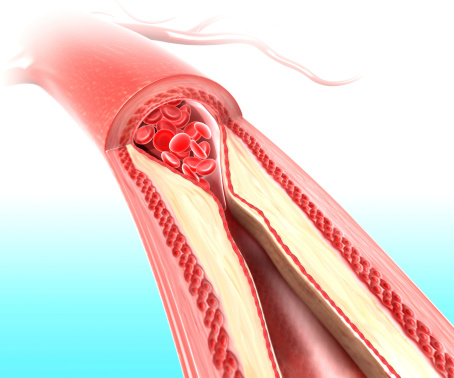 Researchers in the U.K. have found a noninvasive way to identify the early stages of atherosclerosis (buildup of fatty deposits in arteries) using a safe radioactive agent and an imaging system. The findings have been published in a recent issue of the journal Nature Communications.
Researchers in the U.K. have found a noninvasive way to identify the early stages of atherosclerosis (buildup of fatty deposits in arteries) using a safe radioactive agent and an imaging system. The findings have been published in a recent issue of the journal Nature Communications.
For the study, patients were injected with a form of sodium fluoride that acts like a radiotracer in the body. Researchers then used various imaging techniques to track the tracer as it made its way through the body.
Sodium fluoride is commonly found in toothpastes because of its ability to bind to calcium compounds in teeth enamel. However, the ingredient can also bind with unstable calcification in the arteries. In some atherosclerosis patients, pieces of calcium deposits can break off, causing a blockage; this can be especially dangerous if it happens inside an artery that connects with the heart or brain. Because sodium fluoride connects to the calcification, researchers can inject it and then measure radioactivity levels to see where deposits are collecting and building up.
Going back to the study, the patients underwent surgery to remove the arterial plaque buildup, and then researchers examined them again, this time at a higher resolution. They found that although the sodium fluoride tracer built up in the areas where there were unstable calcium deposits, it didn’t affect any of the surrounding tissue. It’s this quality in particular that may make the sodium fluoride tracer a revolutionary, inexpensive technique for detecting high-risk atherosclerosis patients.
The study’s authors also point out that with further research, the tracer may be used in the future to test how well new medicine is working to prevent the progression of atherosclerosis.
Source for Today’s article:
Paddock, C., “New imaging technique spots early stages of dangerous artery deposits,” Medical News Today web site, July 13, 2015; http://www.medicalnewstoday.com/articles/296657.php.
